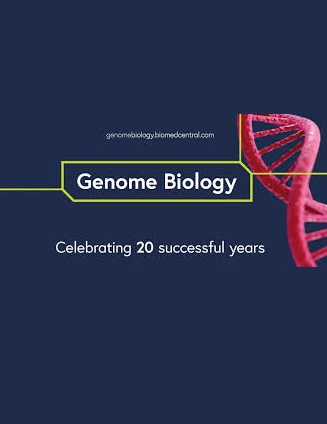Analysis of 30 chromosome-level Drosophila genome assemblies reveals dynamic evolution of centromeric satellite repeats
IF 10.1
1区 生物学
Q1 BIOTECHNOLOGY & APPLIED MICROBIOLOGY
引用次数: 0
Abstract
The Drosophila genus is ideal for studying genome evolution due to its relatively simple chromosome structure and small genome size, with rearrangements mainly restricted to within chromosome arms, such as Muller elements. However, work on the rapidly evolving repetitive genomic regions, composed of transposons and tandem repeats, have been hampered by the lack of genus-wide chromosome-level assemblies. Integrating long-read genomic sequencing and chromosome capture technology, here we produce and annotate 30 chromosome-level genome assemblies within the Drosophila genus. Based on this dataset, we reveal the evolutionary dynamics of genome rearrangements across the Drosophila phylogeny, including the identification of genomic regions that show comparatively high structural stability throughout evolution. Moreover, within the ananassae subgroup, we uncover the emergence of new chromosome conformations and the rapid expansion of novel satellite DNA sequence families, which form large and continuous pericentromeric domains with higher-order repeat structures that are reminiscent of those observed in the human and Arabidopsis genomes. These chromosome-level genome assemblies present a valuable resource for future research, the power of which is demonstrated by our analysis of genome rearrangements and chromosome evolution. In addition, based on our findings, we propose the ananassae subgroup as an ideal model system for studying the evolution of centromere structure.对30个染色体水平果蝇基因组组装的分析揭示了着丝粒卫星重复序列的动态进化
果蝇属的染色体结构相对简单,基因组大小较小,重排主要局限于染色体臂内,如Muller元件,是研究基因组进化的理想选择。然而,对由转座子和串联重复组成的快速进化的重复基因组区域的研究,由于缺乏全属范围的染色体水平组装而受到阻碍。整合长读基因组测序和染色体捕获技术,我们在果蝇属中产生并注释了30个染色体水平的基因组组装。基于该数据集,我们揭示了整个果蝇系统发育中基因组重排的进化动力学,包括在进化过程中表现出相对较高结构稳定性的基因组区域的鉴定。此外,在拟南芥亚群中,我们发现了新的染色体构象的出现和新的卫星DNA序列家族的快速扩展,这些家族形成了具有高阶重复结构的大而连续的周中心结构域,这让人想起了在人类和拟南芥基因组中观察到的那些结构域。这些染色体水平的基因组组装为未来的研究提供了宝贵的资源,我们对基因组重排和染色体进化的分析证明了这一点。此外,基于我们的研究结果,我们提出ananassae亚群作为研究着丝粒结构进化的理想模型系统。
本文章由计算机程序翻译,如有差异,请以英文原文为准。
求助全文
约1分钟内获得全文
求助全文
来源期刊

Genome Biology
Biochemistry, Genetics and Molecular Biology-Genetics
CiteScore
21.00
自引率
3.30%
发文量
241
审稿时长
2 months
期刊介绍:
Genome Biology stands as a premier platform for exceptional research across all domains of biology and biomedicine, explored through a genomic and post-genomic lens.
With an impressive impact factor of 12.3 (2022),* the journal secures its position as the 3rd-ranked research journal in the Genetics and Heredity category and the 2nd-ranked research journal in the Biotechnology and Applied Microbiology category by Thomson Reuters. Notably, Genome Biology holds the distinction of being the highest-ranked open-access journal in this category.
Our dedicated team of highly trained in-house Editors collaborates closely with our esteemed Editorial Board of international experts, ensuring the journal remains on the forefront of scientific advances and community standards. Regular engagement with researchers at conferences and institute visits underscores our commitment to staying abreast of the latest developments in the field.
 求助内容:
求助内容: 应助结果提醒方式:
应助结果提醒方式:


